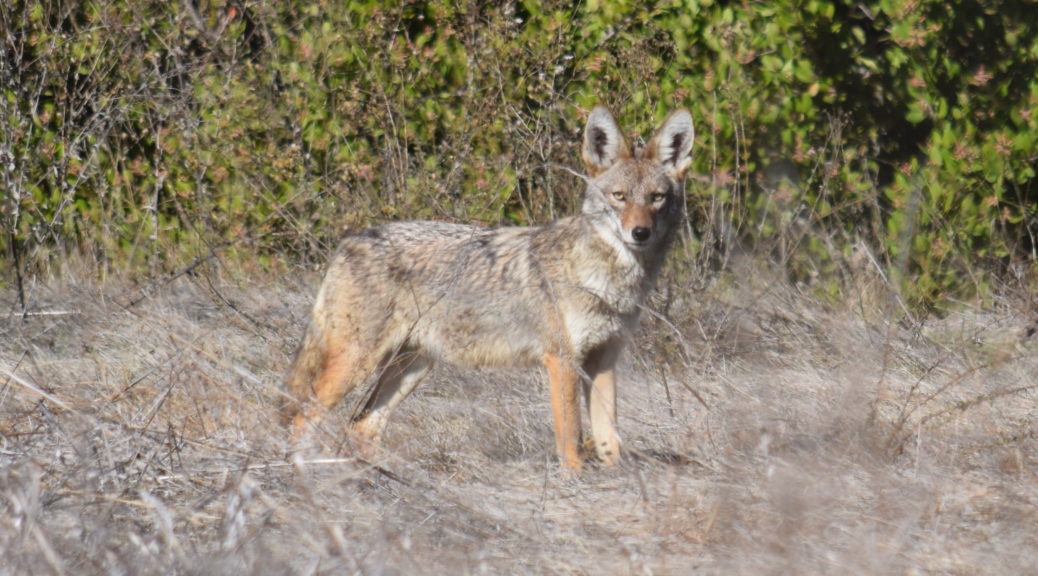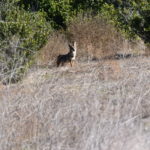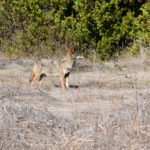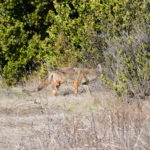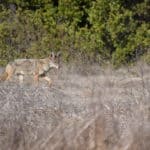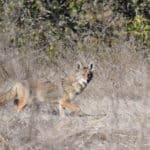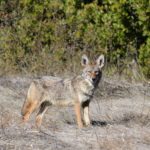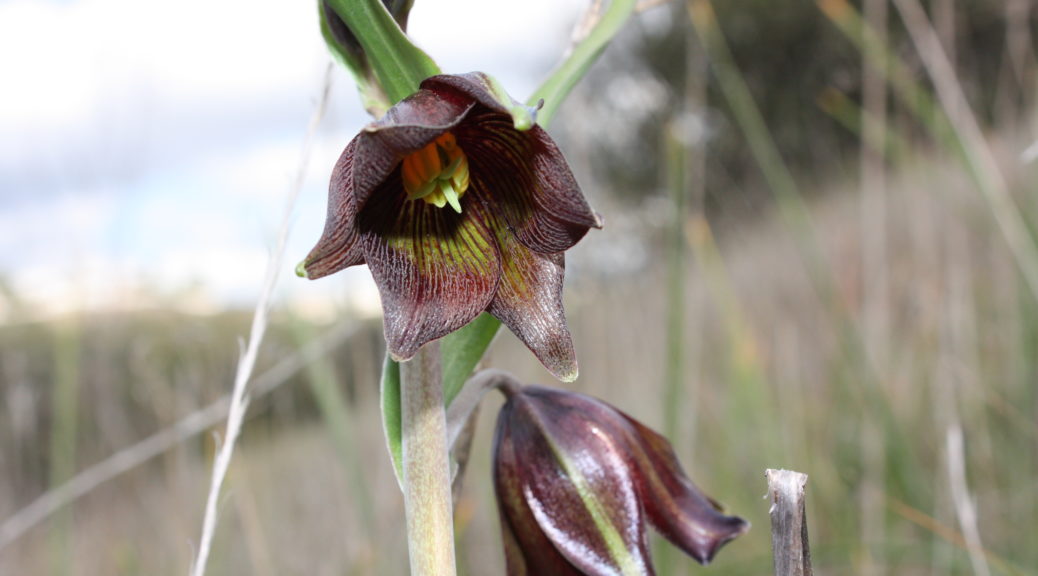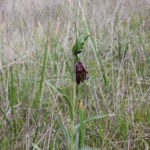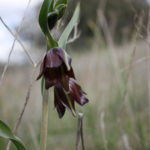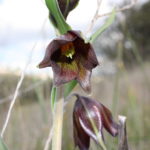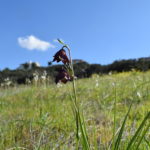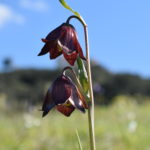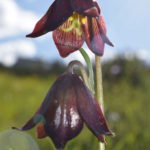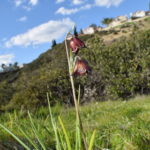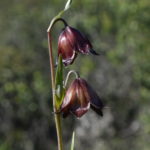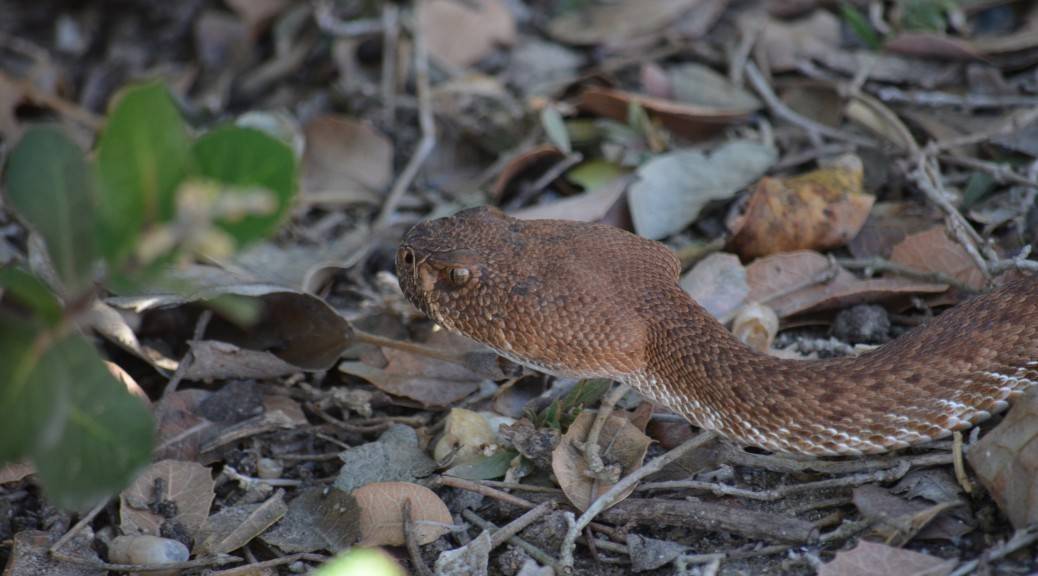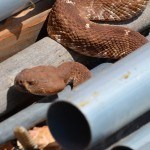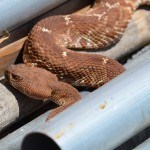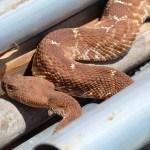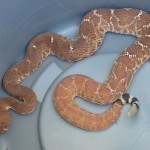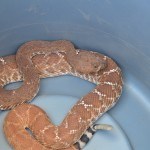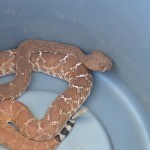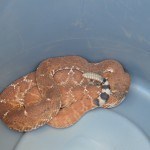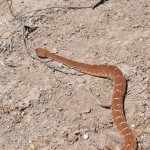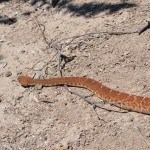As humans keep encroaching and building into more of our open spaces, coyotes are adapting to find food in urban areas. I took this photo of a coyote in Rice Canyon Open Space Preserve. She is predominantly light gray and fulvous (dull orange, brownish-yellow in color), interspersed with black and white. The Kumeyaay name for coyote is hatpaa.
Category Archives: Habitat
Fritillaria biflora ‘Chocolate Lily’
On February 8, 2008 I stumbled upon a purple-brown, chocolate, lily-like flower during my walk through Rice Canyon Open Space Preserve; it turned out to be a rare flower that only blooms when we have a wet, rainy season in Chula Vista. The Fritillaria biflora ‘Chocolate Lily’ grows on the grassland foothills and is endemic to Rice Canyon. For the past 8 years during my walks in Rice Canyon, in the months of January – February, I’m always hopeful that I’d spot this beauty once again, but with the lack of rain I’ve had no such luck. Until this year, on February 23rd. During my many walks through Rice Canyon, I was trying to spot the Where’s Waldo of blooms on the grassy, rolling hillside of the canyon, with the recent and much needed rains, I found the elusive ‘Chocolate Lily.’
(hover mouse over each picture)
Fritillaria biflora ‘Chocolate Lily’ is a species in the Liliaceae family that is endemic to California and northern Baja. Fritillaria biflora is called ‘Chocolate Lily’ because its bell-shaped flowers resemble the color of chocolate.
(hover mouse over each picture)
RATTLESNAKE SEASON
The rattlesnake is California’s only native venomous snake. Six species are found in various areas of the state from below sea level to about 11,000 feet. Their size may vary, but adults can reach 6 feet in length. Rattlesnakes are an important part of the ecosystem, feeding on rodents, birds, and other small animals.
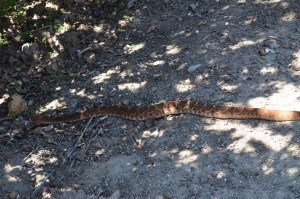 Rattlesnakes have a distinctive, triangular head shape, which is a key characteristic in their identification. Nonpoisonous snakes in California do not have this obvious characteristic. The rattle is on the end of the tail and is composed of interlocking horny segments. Young rattlesnakes are born with a small rattle or button. A new segment is formed each time the skin is shed, which may occur several times each year. The size of the rattle is not a good indicator of age, however, because the terminal segments are often broken off on older snakes. Because they can be broken off, the lack of a rattle does not mean the snake is not a rattler. The characteristic that most readily signifies a rattlesnake is its triangular-shaped head.
Rattlesnakes have a distinctive, triangular head shape, which is a key characteristic in their identification. Nonpoisonous snakes in California do not have this obvious characteristic. The rattle is on the end of the tail and is composed of interlocking horny segments. Young rattlesnakes are born with a small rattle or button. A new segment is formed each time the skin is shed, which may occur several times each year. The size of the rattle is not a good indicator of age, however, because the terminal segments are often broken off on older snakes. Because they can be broken off, the lack of a rattle does not mean the snake is not a rattler. The characteristic that most readily signifies a rattlesnake is its triangular-shaped head.
BIOLOGY AND BEHAVIOR
Most rattlesnakes forage for prey in or near brushy or tall grass areas, rock outcrops, rodent burrows, around and under surface objects, and sometimes in the open. Adults eat live prey, primarily rodents; the young take mostly lizards and young rodents. To catch their prey, rattlesnakes wait until the animal is nearby. The snake strikes with two large fangs that inject venom. This subdues the prey, which is then swallowed whole. Rattlesnakes feed on carrion less frequently. When inactive, most rattlesnakes seek cover in crevices of rocks, under surface objects, beneath dense vegetation, and in rodent burrows. In some areas, rattlesnakes hibernate for several months in the crevices of rock accumulations. Unlike most reptiles, rattlesnakes give birth to live young. Young snakes require protection and are likely to be born in abandoned rodent burrows, rock crevices, or in other secluded places.
MANAGEMENT
Rattlesnakes add to the diversity of our wildlife and are important members of our ecosystem; and should be left alone whenever possible, especially in wild land areas. Nonpoisonous snakes should be left alone wherever found. Because of the danger rattlesnakes pose to people, pets, and domestic animals, it can be necessary to exclude or remove them from around homes and gardens.
CONTROL METHODS
Remember, if left alone, a snake is likely to move on to another area. If necessary, rattlesnakes may be killed with a shovel or club. Rattlesnakes are capable of striking fast, so caution is important. If you don’t want to kill the snake yet want it removed, it is best to call a professional pest or wildlife control operator who specializes in snake removal. The county agricultural commissioner or Cooperative Extension office may be able to direct you to professionals who remove rattlesnakes. Remember, most rattlesnake bites occur when inexperienced people try to pick up or move a rattlesnake. Several predators feed on rattlesnakes including the king snake, which swallows them whole. Unfortunately, the number of rattlers eaten by predators is insignificant in reducing the problem you might encounter around your home or garden.
What can be done to prevent a bite?
Hands, feet, and ankles are the most common sites for rattlesnake bites. Using some common sense rules can prevent most snakebites.
- Never go barefoot or wear sandals when walking in the rough. Always wear hiking boots.
- Always stay on paths. Avoid tall grass, weeds, and heavy underbrush where snakes may be present.
- Use a walking stick when hiking. If you come across a snake, it can strike the stick instead of you.
- Always look for concealed snakes before picking up rocks, sticks, or firewood.
- Always check carefully around stumps or logs before sitting.
- When climbing, always look before putting your hands in a new location. Snakes can climb walls, trees, and rocks and are frequently found at high altitudes.
- Never grab what appear to be sticks or branches while swimming; rattlesnakes are excellent swimmers.
- Baby rattlesnakes are poisonous! They can and do bite. Leave them alone.
- Never hike alone. Always have a buddy to help in case of an emergency. Learn basic life-saving skills.
- Never handle freshly killed snakes. You may still be bitten.
- Never tease a snake to see how far it can strike. You can be several feet from the snake and still be within striking distance.
- Don’t keep rattlesnakes as pets. The majority of rattlesnake bites occur when people tease or play with their “pet” rattlesnake.
- Teach children to respect snakes and to leave snakes alone. Curious children who pick up snakes are frequently bitten.
- Always give snakes the right of way!
Source: wildlifeca.gov
Western Diamondback (Crotalus atrox)
Western Diamondback Rattlesnake Video of Western Diamondback Rattlesnake caught behind storage container and released back into its natural habitat.
This snake can up to 6 feet long and 4-5 inches in diameter. The Western Diamondback is brownish in color with light undersides. It gets its name from the distinctive diamond shaped patches on the topside of the body; its wide light dark tail bands are sometimes called “coontail”.
The Western Diamondback is found in arid or semi-arid places, particularly the brushy areas of prairies, grasslands and deserts; its venom is not as toxic as other rattlers but its size means it can inject quite a bit of poison.
These snakes coil up at a moments notice and will hold its ground when cornered. What’s dangerous is that many of them hardly rattle at all when they are coiled and ready to strike. The Western Diamondback is active by day when the weather is cool and nocturnal when the weather is hot.
Red Diamond Rattlesnake (Crotalus ruberis)
Red Diamond Rattlesnake I, Red Diamondback Rattlesnake II Video of Red Diamondback Rattlesnake caught behind storage container and released back into its natural habitat.
The Red Diamond is similar to the Western Diamondback with the same diamond shaped patches on the top part of the snake with reddish color and the same “coontail”. The Red Diamond can get up to 5 feet long and is mild mannered and quite shy rattlesnake that likes woodlands and brushy slopes on the southern California Coast and San Diego basins. These snakes are active during the day and night and nocturnal when the weather is hot.

